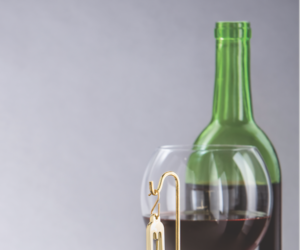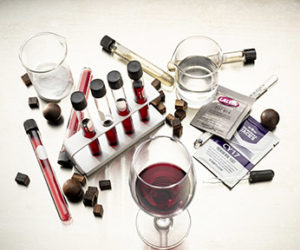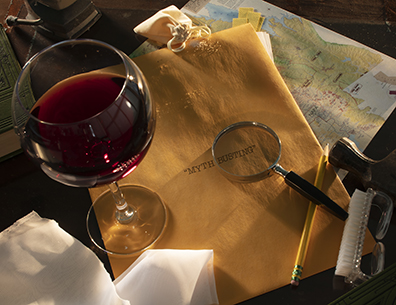
There are so many opinions out there that we can sometimes get bogged down and mistake an opinion for fact. This is true in all aspects of life but especially in home winemaking. Home winemaking recipes have been passed down from generation to generation. These recipes were created with the best of intentions, but sometimes there are better, easier, cleaner, and safer ways to do things. As we experiment and learn more we can utilize these new tools and practices. For this article, I’ve gathered some of the top myths, misconceptions, and half-truths I’ve heard while working in this industry since I was 12 years old. The great thing about home winemaking and wine in general is that there’s always something new to learn. Regardless of whether you’ve been following one of these techniques, after being exposed to a different perspective you can make the decision to stick with the way you have always done things, or try something different. We are always trying to hit that “next level” of wine as winemakers. Sometimes in order to do that, you need a fact check.
1. “I get a headache when I drink wine because I’m allergic to sulfites”
Getting headaches from sulfites is a big myth. According to Google only 1% of the Earth’s population is allergic to sulfites. Yet, many more people are convinced that they are. So much in fact that there is a market for items like “wine drops” promising to take away your sulfite allergy by just adding one drop to your glass of wine. Sulfites are actually found in many foods. For example, they are found in eggs, meats, leafy greens, and dried fruits. Whether it is the natural makeup of the food or a preservative addition, you most likely consume sulfites (and more than you find in a bottle of wine) every day.
Another thing to remember is that no matter if you have a native fermentation or inoculated fermentation, yeast naturally produces sulfur dioxide (0–20 mg/L for low producers, and up to 80 mg/L for some yeasts). There are regulations out there to keep the consumer in the loop about how much sulfite is in their wines. The TTB allows for a maximum of 350 ppm allowed in wines sold in the United States, but most wineries end up at 50–65 ppm range. Wineries only utilize sulfites as much as they need to. The TTB requires wines labeled “Does not contain sulfites” to be below 10 mg/L. Why do winemakers add SO2 or sulfites to their wine? We add them for anti-microbial and preservation purposes — which is a really good reason!

2. “You can filter your wine with almost anything”
Filtering is an important process in winemaking. However, no matter how
hard you try to cut corners, there are certain ways you need to filter. Purchasing a filter and filter pads is the best way to ensure cleaning up your wine. There are some winemakers who swear by other materials like cheesecloth and Nino’s nylon pants.
Yes I said “Nino’s nylon pants,” and yes this is a real story. I respect Nino and his creativity when he didn’t have access to filtering equipment. He got the job done no matter what and that is something all winemakers need to be prepared to do. Nino brought his special nylon pants over from the old country and every year, when the wine was “done” and ready to bottle, he poured the wine over the pants in order to “filter” his wine. Then he washed the pants off with a garden hose, hung them out to dry before packing them up to use for next year’s vintage.
I know this might sound crazy, but since Nino thought it worked for him he kept doing it. Without careful experiments, it is hard to tell what is useful from what is harmless or even detrimental. As someone who is a bit more of a germaphobe and who has access to filtration equipment, I prefer using a Buon Vino filter and at the very least a coarse filter pad.
The goal of filtering is to decrease any microbial issues and catch and clear the wine of solids you don’t want in the bottle. They have a saying in the wine industry, “we drink beer on bottling days and whiskey on filtering days.” This is because filtering can frankly prove for a long and frustrating day. Even though this may happen to professional and home winemakers, it’s worth it to filter and know your wine is safe and tasty in the bottle. Who wants to put in that much work to create a wine they don’t want to drink, right?

3. “Just sprinkle the yeast on the must”
We’ve all been there. You’re new to winemaking, you get the yeast because that’s what everyone tells you to do. But when you get it home you don’t know what to do with it. So you pour it into the must as you would a packet of sugar into your coffee and let the wine go. Unfortunately this is not going to create a strong fermentation when working with wine grapes or fresh wine juice. To ferment wine properly, yeast should be hydrated.
Hydration protocols are available for all dried yeasts. Hydrating the yeast is an extra step and there are many different yeast hydration protocols out there; but at the very least you need to hydrate the yeast enough to wake it up before you add it to your must. According to Scott Laboratories, if you go the “sprinkle” route, only about 10% of your yeast might get ignited for fermentation and you will most likely get a stuck fermentation or run the risk of getting off-flavors and aromas.
Some people have been successful with this fermentation style when using fresh juice. The theory is that the yeast might get hydrated just enough when added to the juice to help produce a successful fermentation, but the yeast is still not working at its full capacity. The safest practice when working with wine grapes, frozen grape must, and fresh wine juice is to always, always hydrate your yeast!
However, this is different for wine kits, so we can’t say this is totally false. Wine kits are strategically created a certain way to ensure a successful fermentation. So if your kit instructions tell you to sprinkle your yeast, sprinkle your yeast. Do not deviate from the kit instructions or it could cost you your wine.
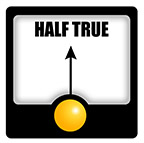
4. “Bleach cleans everything, so of course it can be used to clean winemaking equipment”
Bleach should never be used to clean your winemaking equipment. Bleach can ruin a wine. Do not use bleach anywhere near your winemaking, even for cleaning. The chlorine in the bleach solution can contaminate your wine and create off-odors, flavors, and cause 2,4,6-trichloroanisole (TCA) formation, also known as cork taint.
There are many chlorine-free cleaning and sanitizing supplies out there for home winemakers to use that keep your wine safe and protected. These include B-Brite, One Step, Soda Ash, and potassium metabisulfite, just to name a few.

5. “It’s safe to drink wine from your Demijohn or Tank spigot.”
Many winemakers can’t resist taste testing their wines throughout the year, and I can’t say I blame them. I’m also guilty of this. But, if you’re not topping off your wine you’re slowly oxidizing your wine. This happens to a lot of people when using demijohns or stainless tanks with spigots. If you aren’t refilling what you’re siphoning out or dropping the lid down every time in terms of a variable capacity tank, you could be oxidizing your wine.
Also, keep in mind if you are drinking your wine every day you could develop cellar palate, so you won’t even realize that the wine and your taste tolerance is changing. Yes, that is correct — cellar palate is a real thing and a big reason why a good winemaker tastes so many different wines all of the time. The more you try different wines, the more your palate is exposed to different flavors — good or bad — making it easier for you to pick up on any faults or flaws in your wine. Don’t get me wrong, enjoying your homemade wine every day is a great perk to being a winemaker, but try to incorporate other bottles into your wine tasting rotation too.
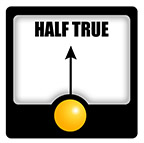
6. “My wine went bad, it’s fizzy”
When you have fizz in your wine bottle it can be for a few reasons, and it can be salvageable. The reason could be that re-fermentation is occurring in the bottle, from alcoholic fermentation or it could be from malolactic fermentation (MLF); and then sometimes your wine simply needs a good degassing. This can be a frustrating situation. You will have to open up all the bottles and pour everything back into your carboy, run some tests, correct the problem, and bottle a second time.
For wines that are going through a re-fermentation in the bottle you need to do a few things. First, empty the wine into your aging vessel and test the SO2 and malic acid levels. If your wine did not go through MLF then you can add potassium metabisulfite and potassium sorbate (if your wine has gone through MLF, do not add potassium sorbate as it can cause a geranium odor) to ensure refermentation does not occur or you filter your wine through a 0.45 micron filter and then add potassium metabisulfite. If your wine is on the sweeter side I’d do all three steps to ensure that your wine does not referment again.
If your wine has not fully finished MLF and is currently going through it, you’ll need to empty your wines into your aging vessel and let the MLF run its course until it’s finished. If your cellar is cold I’d suggest wrapping your vessel in a heated blanket to warm up the fermentation and help it complete at a faster rate.
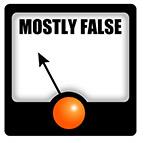
7. “You don’t need to crush up your campden tablets”
Yes you do! If you throw a Campden tablet into your wine it will just sit and fizz over time; never really homogenizing with the wine fully. This defeats the purpose of adding the SO2 to help preserve your wine if it’s not going to homogenize. Another problem with these is that there is no set amount of SO2 in Campden tablets. Every tablet brand is different. We suggest taking each tablet, crushing it up and measuring it on a gram scale to make sure you are adding the proper amount of SO2 needed to protect your wine.
When using Campden tablets for cleaning I still recommend crushing them up and diluting them in water. You want the SO2 to disperse throughout the water solution to be a viable cleaning tool. Again, just letting it sit at the bottom of the pail like you would an Alka-Seltzer won’t get you the amount of potency you’re looking for in a cleaning solution.
In my opinion, there are better options out there for potassium metabisulfite, like the powder format, which is easy to use, store, and measure.

8. “You have to press all of the juice out of the grapes as hard as you can!”
Many old-school winemakers tell me that they got the pressed must “suuuuper dry” with so much enthusiasm. However, when you press really hard at the end of your press you are getting more bitter seed tannins and very little good wine. It is not worth it for that last bottle of wine. These harsh tannins will create astringency in your wine that you can’t get rid of unless you age for a long period of time or use finishing additives to counteract it. Even then you might not be able to remove those harsh seed tannins from your wines.

9. “Putting a wine through Malolactic Fermentation means it will be buttery”
The buttery flavor compound really only comes through when making a Chardonnay that is put through malolactic fermentation (MLF).
In my opinion, all reds should go through MLF, but they do not get that buttery characteristic. That being said, if you are looking to differentiate your red wine, it can be an interesting and pleasant stylistic choice to not put your red wine through MLF. Malolactic fermentation helps soften the wine and reduces acidity. The process converts malic acid (tart) to lactic acid (same acid found in cheese) creating a supple and soft mouthfeel.
Red wines that go through malolactic fermentation can usually be consumed a little younger (which is nice for impatient winemakers) or be laid down and aged to express a velvety structure when finally released.

10. “Napa is the only place in the U.S. to find great Cabernet Sauvignon grapes”
Napa is king when it comes to growing Cabernet Sauvignon in the U.S. There’s no denying it. However, there are other North American regions that grow a great Cab too. In fact, California has many great growing regions including the Suisun Valley, Sonoma, Lodi, Paso Robles, and the Central Valley, which are worth considering.
Suisun Valley has 10 out of the 12 same soil components as Napa and a very similar weather pattern, making their small AVA a great place for boutique Cabernet Sauvignons. They are even experimenting with different clones in the vineyard to find the perfect blend of Cabernet.
Sonoma County, which is made up of a lot of sub-AVAs, has an incredible array of Cabernet Sauvignon to choose from. Whether the Cabernet is grown in a more coastal region or mountainous region, Sonoma has a lot to offer from a Cabernet perspective.
Lodi Cabernet has been gaining popularity. The Lodi region has been implementing their sustainable growing practices called LODI RULES and it has impacted the fruit in wonderful ways. The Cabernet being grown there is mostly sustainably farmed and grown for more boutique styles of winemaking rather than mass production. With its many different sub-regions they also have cool breezes coming in from the Mokelumne River, rocky soil, and fertile soil Cabernet options.
Paso Robles winemakers have been producing great Cabernet Sauvignon too. The Cabernet winemakers and growers of the region have created the “Cab Collective” where they share why this region is perfect for growing and creating Cabernet and Bordeaux Blends.
While the Central Valley can get a bad rep for being a more “value-driven” region, value doesn’t always mean lack of quality. The growers of Central Valley have been implementing a lot of new and sustainable methods in their growing practices that have shown a great jump in quality. Cabernets from this region are great for a winemaker who wants to bottle their Cabernet and drink it early. Also, there are a lot of vines in this valley that provide some interesting characteristics for winemakers.
Outside of California, Washington State is gaining popularity left and right. I know out on the East Coast I see more and more of these wines in the liquor stores and I’m always excited to try them! Many of the vineyards in Washington State are own-rooted. Meaning that vine is planted right into the ground, not grafted onto rootstock. This is because Phylloxera hates their soil so they don’t need any pest-resistant rootstock. Some sommeliers swear they can tell the difference. Regardless, there are many sub-AVAs and interesting sub-regions to choose your Cabernet from in Washington State.

11. “throw in a sulfur strip and then you’re good to go”
Sulfur strips can leave behind sulfur ashes that can create hydrogen sulfide or rotten egg smell in your wine if it isn’t fully cleaned out. When you use a sulfur strip in your wine barrel or aging vessel make sure to rinse it out thoroughly. Otherwise you could be asking for some major faults and flaws in your wines.

12. “Varietal wines must be 100% that varietal to be labeled as such”
It’s a little known fact to the consumer that the TTB in the U.S. only requires commercial wines to be 75% varietal to be labeled as such. As a winemaker who enjoys blending, I absolutely love this rule. As home winemakers you are not kept to TTB standards but it does give some insight into why your wine may not taste quite like the wine you’re trying to mimic. Winemakers from Bordeaux to Napa always have special little “pixie dust” additions, as they call it. It’s their own special percentages of blend additions added to their straight varietal wine before bottling. Adding these little tweaks can assist with the structure, color, and complexity of the wine. So feel free to blend! It might give your wine that boost it needs to jump out of the glass and stand out in competition among other varietal wines!

Conclusion
I hope these tips help you through the winemaking process. Keep in mind when you ask 10 winemakers how to make wine you will get 12 different answers, as the saying goes. So there are a lot of ways to make really great wine. Always check your sources when getting advice and have fun experimenting with different styles and varietals!



